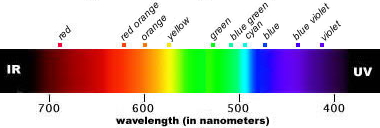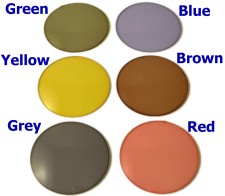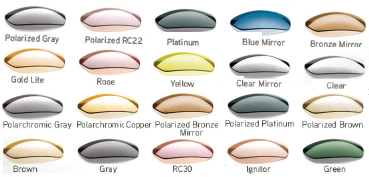 Products
Products
 Sunglasses
Sunglasses

Why Wear Sunglasses | Color-Activity Matrix | Color attribute table | Activities | Light Transmission Recommendations | Terms | Retailers | Manufacturers/Brands | Links
Note: Much of the information below also applies to ski goggles.
Why Wear Sunglasses:
Sunglasses are important especially in the spring and summer on the water or snow to protect you from snowblindness, and other types of eye damage.
- Comfortable vision. The sun's brightness and glare interferes with comfortable vision and the ability to see clearly by causing people to squint and the eyes to water. Light over about 3,500 lumens is uncomfortable.
- Improve sports performance.
- Prevent photokeratitis (snow blindness), which is a temporary but painful sunburn of the eye's surface.
- Reduce the risk of other eye problems, cataracts, macular degeneration and pterygiums.
- Quicker dark adaptation when transitioning to nighttime or indoor light levels.
- Protection of skin around the eyes from skin cancer.
- UV blocking: Ultraviolet rays can increase your risk of developing problems such as cataracts. Color doesn't affect UV blocking. They should block 95% or more of UVA and UVB; Opthamologists recommend 99.75% blocking. Up to 80% of UV radiation makes it thrugh a cloud cover, so UV protection is important even on cloudy days.
- Light Transmision Factor - LTF or VLT: General purpose sunglasses transmit from 8 to 40% of light [LTF/VLT]. Sunglasses range from 9-70%; Most people choose sunglasses in the 15 to 25% range. See Smith table below.
- Polarization to reduce reflected glare.
 Wire frames are lighter, nylon are more flexible.
Wire frames are lighter, nylon are more flexible.
- Metal hinges are more durable than plastic.
 Side protection - Wide plastic temples and wraparound lenses give more protection from dust, snow, wind, rain and glare that may come in from the side.
Side protection - Wide plastic temples and wraparound lenses give more protection from dust, snow, wind, rain and glare that may come in from the side.- Lens material - Glass, Polycarbonate, CR-39, High-index, Trivex. See eyeglasses.
- Lens quality
- Lens coatings - Scratch-resistant, Anti-reflective, UV protection. See eyeglasses.
- Fit and comfort
- Some sports models have "air dams" molded into the frame that direct the flow of air over the inside of the lenses or small ventilator holes to reduce fogging.
- Cosmetic - Different lens shapes conpliment different face shapes.
Lens Tints: Click on sport for more information below.
| Lens color |  |  |  |  |  |  |  |  |  |  |  |  |  | Comments |
|---|---|---|---|---|---|---|---|---|---|---|---|---|---|---|
| Gray | x | x | x | x | x | all-purpose | ||||||||
| green | x | x | x | x | varying light conditions | |||||||||
| orange | x | x | x | x | o | cloudy, hazy or foggy conditions | ||||||||
| Gold & yellow | x | x | x | x | x | x | x | x | overcast flat light | |||||
| Amber | x | x | x | x | o | x | contrast, depth perception | |||||||
| Brown or Copper | x | x | x | x | x | x | o | x | x | Enhanced depth perception, hazy sun | ||||
| Melanin (uvex) | x | x | x | x | High contrast, UV protection | |||||||||
| Ignitor (Smith) | x | x | o | highlights shadows / increases color definition | ||||||||||
| Violet | x | x | o | contrast | ||||||||||
| Vermillion | x | x | x | Depth perception | ||||||||||
| Rose | x | x | x | Highest contrast - low-light | ||||||||||
| Red | x | x | x | o | Contrast, early morning or evening | |||||||||
| Lens color |  |  |  |  |  |  |  |  |  |  |  |  |  | Comments |
| Mirrored | x | high altitude | ||||||||||||
| Rose Platinum -Smith goggles | x | x | Reflective mirror coating to reduce glare in bright sunlight, while the tint continues to increase definition and still provides low-light contrast. |
|||||||||||
| Vermillion Gun -Bolle goggles | ||||||||||||||
| Pewter/Ice Iridium | x | Okley uses iridium for their mirror effect. | ||||||||||||
| Light Blue | x | x | x | Increase in contrast for better depth perception in low light or hazy conditions. |
Color: (Numbers in [ ] are transmission level.
| Gray | Offer the least amount of color distortion; good for all-purpose use and clear days.
allows true color perception; popular neutral color; good general purpose tint; does not enhance contrast; good tint for golf, cycling or running. Gray 3 [20%] reduces the maximum amount of visible light. Good for bright sunny days and heavy glare situations. Best uses include driving, deep-water fishing and general use. Gray 1 [41%] a lighter shade - Good for partly sunny to bright days. |
| green | Wavelength Enhanced: 505nm - 575nm Has slightly better contrast than the gray colors, but is not considered a high contrast lens. Green maintains true color balance and is a good choice for varying light conditions. allows true color perception; popular neutral color; good general purpose tint; fair contrast in low light; reduces eye strain in bright light. |
| orange | Wavelength Enhanced: 625-675nm Block blue light, offering a brighter view on cloudy, hazy, or foggy days. Good for hunting, biking and skiing. blocks blue light; brightens cloudy, hazy or foggy days; world looks yellow or orange; excellent for contrast; minimizes eye strain; good tint for sportsmen, pilots, skiers. |
| Gold & yellow | Wavelength Enhanced: 585-625nm Add contrast; best in flat and dim-light situations. Yellow provides the maximum light transmission. Popular for hunters and for night driving. excellent depth perception and contrast in low light; ski industry standard for overcast days; |
| Amber | Wavelength Enhanced: 650-700nm Block blue light, offering a brighter view on cloudy, hazy, or foggy days. Hunting, Golf Tennis. |
| Brown, Copper, Bronze | Wavelength Enhanced: Bronze: 650-700nm; Brown: 650-685nm Best for enhancing depth perception. better in hazy sun; enhances contrast; good tint for high-glare sports, such as skiing, fishing or sailing. Brown 3 [15%] - excellent contrast and improves visual acuity. Good for bright sunny and varying conditions. Reduces blue light. Best for driving, golfing and shallow water fishing. Brown 1 - is a lighter shade. Improves contrast. Good for partly sunny to bright sunny days. |
| Melanin | Blocks high amounts of blue light, while maintaining true color balance. Melanin provides high contrast for better visual acuity and is good for bright sunny and varying conditions. Great for golfing, driving and fishing, or any one with macular degeneration. Melanin is a pigment in your skin, eyes and hair that provides natural visable light and UV protection. It absorbs the higher energy light more strongly than the lower energy light. So it absorbs UV more than blue, and the blue more than green - and so on. It provides near optimum protection to the retina by filtering the different colors in proportion to their ability to damage the tissue of the retina. See: MelaOptix.com |
| Vermillion | Wavelength Enhanced: 675-700nm Excellent depth perception in low light; contrasts objects against blue and green backgrounds; good tint for skiing or sportsmen.. |
| Rose | Wavelength Enhanced: 625nm - 700nm Has the highest contrast and best low-light image resolution. |
| Red | Increases contrast. Often used for fishing in early morning or late evening hours. Also used for skiing and hunting. |
| Violet | Wavelength Enhanced: 400nm - 450nm increases contrast and dampens certain backgrounds. Violet is often used by hunters in average or bright conditions. Also used for skiing, snowmobiling and golfing. |
| Mirrored | Reduces the amount of light that reaches the eyes; good at high altitudes. |
| Gradient | Shaded from top to bottom. (A double-gradient lens is dark at the top and bottom, and lighter in the middle.) Driving glasses are often gradated so that you can see the dashboard clearly. |
 UVA (320-400 nm)
UVA (320-400 nm)UVB (290-320 nm)
UVC (200-290 nm)
Tints:

Glasses4Eyes.co.uk

Smith from store.yahoo.net (click for larger image)

Kaenon tints
Numbers are % light transmission

| Golf | Copper-colored | Improve depth perception and make the contours of the ground more distinct. Golf frames - some manufacturers offer special frames with minimized bridge and extended bottom flaps to reduce the visual distraction of the frames during your swing |
| Green | slightly better contrast. Green maintains true color balance and is a good choice for varying light conditions. | |
| Violet | Helpful finding the ball in the rough. | |
| Tennis | blue or green | Allow the blue wavelengths to pass through the lens, highlighting the background and enhancing the contrast with the yellow ball. |
| Snow skier or snow boarder | Browns, coppers, ambers | Excellent low to mid light lens, amber lenses filter out blue light to improve contrast, and increase depth perception in varying light conditions for better definition of contours and textures of the snow's surface. Plastic frames - sturdier and more flexible than metal frames Wraparound frames - offer the best protection against wind and snow. Polarized lenses - absorb glare off the snow, although some say you will not be able to see ice with them and they reduce contrast. There doesn't seem to be any general agreement on this. |
| Yellow, Oranges, rose and red | Help the skier see shapes, objects and bumps in the snow more clearly because they help block out blue, or hazy, colours that are common. Often, these lens tints are called "blueblockers" because of this blocking ability. They work well on overcast days | |
| Mirror | effective because they limit glare. | |
| Boaters and fishermen | neutral gray | Enhance dark fish and are best for deep water fishing. Amber lenses accentuate sandy bottoms of shallow water |
| Brown | bring out grassy water bottoms | |
| Yellow | is the most effective in low light or highly overcast situations. | |
| Red | increases contrast. Often used for fishing in early morning or late evening hours. | |
| Blue | Best suited for open ocean. | |
| Hunting | yellow or amber | Light up the viewing area along with providing contrast. |
| Cyclist | mirror | Reduce reflections Wraparound frames - offer the best protection against wind and dust |
| High-contrast browns and coppers | Enhance the perception of the road or track surfaces in bright light | |
| Yellow | Most effective in limited light conditions and is superior in contrast enhancement. |
Choosing Ski Goggles at SimplyPiste.com
 It is an index from 1-100 proposed by Dr. Gary Hall, M.D. Phoenix, AZ.
The EPF rating is based on frame coverage, ultra-violet (UV) protection, blue light protection and infrared protection, or the ability to shield the eyes from heat. The final EPF rating is a result of averaging the scores of these four factors known by the acronym
It is an index from 1-100 proposed by Dr. Gary Hall, M.D. Phoenix, AZ.
The EPF rating is based on frame coverage, ultra-violet (UV) protection, blue light protection and infrared protection, or the ability to shield the eyes from heat. The final EPF rating is a result of averaging the scores of these four factors known by the acronym